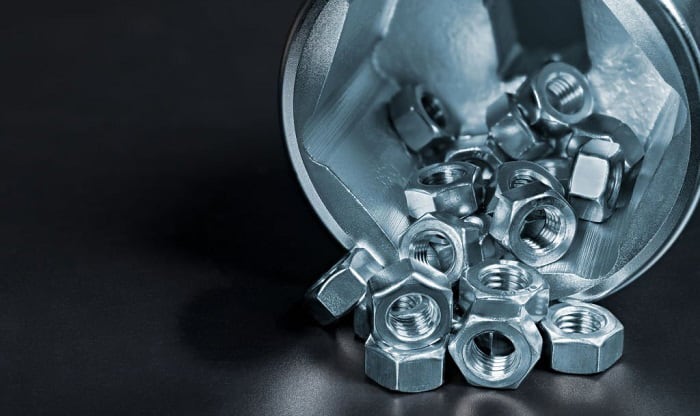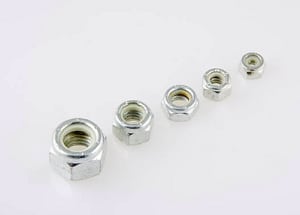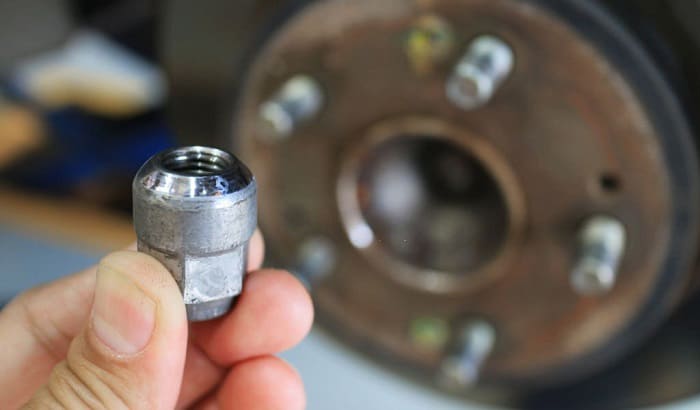There are different types of lock nuts, each with its unique way of working and fastening. Generally, lock nuts are manufactured and designed in a way that they would not easily loosen when applied with force or make themselves loose once they are in place.
You may have asked yourself, “what are lock nuts and how does it work?”. To further your understanding of the question, read on.
Table of Contents
What Are Lock Nuts?
Lock nuts work to make the bolted joints firm and secure and prevent loosening due to vibrations and torque.
Unlike ordinary nuts, which provide force for clamping a screw or a bolt in securing nuts and their movement with only a basic threaded hole, lock nuts utilize different materials to act as fasteners.
Types of Lock Nuts: How Does a Locking Nut Work and How to Use It?
Lock nuts work to serve various purposes depending on their design and material of construction.
Some are designed and manufactured in such a way that friction is enhanced once they are attached, while others rely on clamping mechanisms integrated into the lock itself.
Lock nuts are classified into two types: friction lock nuts and positive locking nuts.
1. Positive Locking Nuts
Positive locking nuts, or also known as surface-bearing lock nuts, are flexible nuts as they can be freely rotated to either loosen or tighten the nut. This type of lock nut only locks onto the bolt or thread when there is a positive action done on them, like inserting a pin.
An example of a positive locking screw nut is the castellated nut or castle lock nut. A castellated nut is designed with a cylinder-like extension on one end where it contains the notches.
The castellated nut’s threaded shaft can be inserted with a pin, which prevents the lock nut from rotating or loosening. This type of nut can be secured with a safety wire, an R-clip, or a cotter pin, depending on available.
Another example of a positive locking nut is the slotted nut. Although they look similar to the castellated nut, the slotted nut is used in vehicle axles because the diameter of the castellated and the wrenching area are the same.
2. Friction Lock Nuts
Friction lock nuts, also known as prevailing torque nuts, use friction to avoid loosening. Most of the time, locking down a friction lock nut requires greater force or torque to either loosen or tighten the nut.
Because of this, the manual assembly time for this type of nut is increased, as they cannot be smoothly spun through the length of the thread, it is going to lock on. However, they are much cheaper than the other type of lock nuts.
These are different kinds of friction lock nuts and different ways to use a locking nut. One example of a friction lock nut is the nylon insert lock nut.
One typical for this type is the nylon insert lock nuts:
- Stop nuts, better known as nylon insert lock nuts, are composed of a nylon layer in the interior of the lock nut itself.
- The nylon inside the nut acts as the stopper as it puts pressure between the nut and the bolt, preventing it from becoming loose or falling off.
- Nylon insert lock nuts are used in many applications as they are easy to apply and reliable among other lock nuts. However, there are limitations to the application of the nylon insert lock nut in terms of high temperatures.
Regarding these surface-bearing lock nuts, there can also be hex jam nuts, center lock nuts, top locknuts, jet nuts, serrated flange lock nuts, and more.
How to Install a Lock Nut With Nylon Inserts
Locking nut with nylon inserts is easy and simple. Prepare your trusty ratchet and nut socket, and follow the steps below:
- Check your nylon first. Examine the nylon insert on hand to check for damages or discrepancies that might render the lock nut useless.
- Handscrew the nut onto the bolt. Thread the nut onto the threaded stud or the desired bolt and rotate it clockwise with your hand until you feel that it does not turn anymore.
Note that at this point, the nylon insert has already reached the fastener’s top thread.
- Insert the ratchet with the socket. Put in place the appropriate socket or hole for the lock nut onto the drive ratchet that you have. Then, tighten the nut with the ratchet.
Carefully fit the socket onto the nylon lock nut you have placed, and rotate the ratchet’s handle in a clockwise manner, turning the nylon lock nut onto the bolt or stud.
If you feel that the nylon lock nut creates resistance as you turn your ratchet, don’t worry. It is completely normal.
- Stop rotating the ratchet if you feel that the nylon lock already has a tight grip on the surface of the thread or bolt.
- Lastly, before leaving the workspace, check first if the nylon insert is secured to ensure that it will not fall off after the installation.
How Do You Measure a Nut Size?
There are different sizes for different nut types, and if you are confused about what nut you have to use on the bolt, you are not alone. You can measure the nut and bolt size with only a basic inch and a metric ruler.
Here’s how to do it:
Step 1: Determine the measurement system.
Depending on the markings on the top of the bolt screw, you should know if you are dealing with metric or inch fasteners.
If there are no available markings, record the outside diameters of your bolt and nut in millimeters and inches.
Step 2: Assemble your measurement.
Utilizing the outside diameter that you just measured, assemble the metric version and standard version of your measurements.
- For the metric version, the measurement should be M+Outside Diameter x Thread Pitch.
- For the standard version, the measurement should be Inch+Outside Diameter – Thread Pitch.
Step 3: Go to your local store.
With your standard and metric versions of your measurement, visit your local hardware store to look for the fasteners that measure the same as yours.
You can also go for a metric or inch thread gauges, which are more accurate than using rulers.
Frequently Asked Questions
How to Tighten a Lock Nut
Tightening a lock nut is a simple and straightforward process.
The following is the answer to your question “Which way does a lock nut go on?”:
- First, like a typical nut, slide the lock nut on the thread of your desired bolt.
- Tighten the lock nut with your hand until it is already resisting from going through the thread any further.
Note that you have to ensure that the flat surface of the nut or the lock nut direction is straight or without any raised area.
- Lastly, utilize your torque wrench to tighten the placed lock nut until you achieve the specified torque.
What is the Difference Between a Lock Nut and a Regular Nut?
Traditional nuts are only made up of a simple threaded hole, which means that repeated exposure to rocking and moving might cause the nut to loosen or possibly fall off the bolt.
On the other hand, the lock nut is designed to resist vibrations, preventing it from falling off. For example, the nylon material of a nylon lock nut can put pressure to secure the nut in place.
There are no disadvantages of lock nuts when you use them correctly.
The above-mentioned is true, especially when you compare lock nut vs hex nut.
Conclusion
Do not waste your time and resources to call someone for a simple house work, such as locking nuts and bolts, that you can simply do. Research and gather the appropriate materials to finish the work.
Reading this article “what are lock nuts and how does it work?” goes a long way. With the right knowledge and right process of tinkering, you can save time and money.

I am the last member to join Revolar and might be just the luckiest to work with dedicated people like Teddy and John. Our team has established a process where my only job is writing the best content to deliver incredible ideas and guides.










